Home Page /
Male Health / Peyronie's Disease Treatment Options
Peyronie's Disease Treatment Options. What is the best treatment after 40?
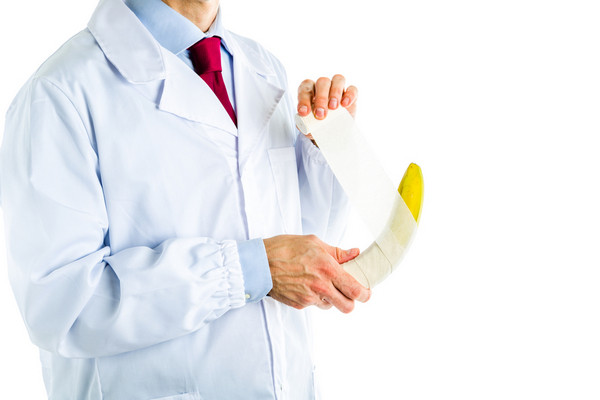
Understanding Peyronie's Disease
Peyronie's Disease, a condition primarily affecting men over the age of 40, is characterized by the development of fibrous scar tissue, or plaque, within the penis. This condition can lead to penile curvature, causing physical discomfort and psychological distress. Understanding the intricacies of Peyronie's Disease is crucial for those seeking effective treatment options.Causes of Peyronie's Disease
The exact cause of Peyronie's Disease remains elusive, but it is often associated with micro-traumas to the penis, which can occur during sexual activity or other forms of penile stress. These micro-injuries trigger an abnormal healing response, leading to the formation of plaque on the tunica albuginea, the fibrous tissue that surrounds the erectile chambers of the penis.As the scar tissue accumulates, it can create areas of inflexibility, causing the penis to bend or curve during erections. This curvature can range from mild to severe, and its impact extends beyond the physical realm, affecting sexual function, self-esteem, and overall quality of life.
Symptoms of Peyronie's Disease
Common symptoms of Peyronie's Disease include pain during erections, a palpable lump or hard tissue beneath the skin, and of course, the noticeable curvature of the penis. In some cases, the curvature may develop gradually, making it challenging for individuals to pinpoint when the condition initially manifested.The psychological toll of Peyronie's Disease should not be underestimated. Men may experience anxiety, depression, and a decline in self-confidence due to concerns about their appearance and sexual performance. Intimate relationships can be strained, further emphasizing the importance of seeking timely and effective treatment.
What is the best treatment for Peyronie's disease after 40?
For individuals that suffer from penile curvature, there are several different Peyronie's disease treatment options that might be helpful for the condition.Can Peyronie's Disease be Cured?
While there may not be a definitive cure for Peyronie's Disease, there are various treatment options available to manage symptoms and improve penile function. The choice of treatment depends on the severity of the condition, individual preferences, and the guidance of healthcare professionals.It's crucial for individuals with Peyronie's Disease to consult with their healthcare providers to determine the most suitable and effective course of action for their specific case.Let's now review these treatment options in detail.
Vitamins
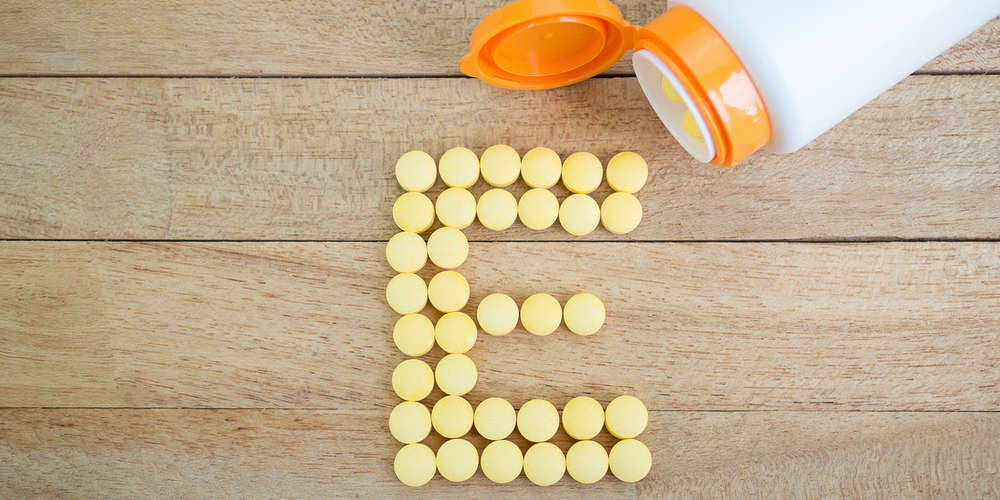
Vitamins for Peyronie's Disease Treatment
This will give you the nutrition that you need to maintain a healthy body and it will probably help your Peyronie's disorder.
Vitamin E
There is one vitamin that that is said to be quite successful in treating this condition and that is vitamin E. Some researchers indicate that those that have a vitamin E deficiency often have Peyronie's disease. There is no definitive link to this but there's a correlation between a lack of vitamin E and those that suffer from penile curvature. According to many researches and studies this is one of the best vitamins for Peyronie's disease.Vitamin E is known to help prevent scar tissue and it has properties that help with a blood dilation so this keeps the blood vessels in good health. Vitamin E is also a very anti-inflammatory.It is not been explored to a great degree as a treatment for Peyronie's disorder but there was a report in a 1993 that was given at the US National Institute of Health conference which said that around at 99% of individuals that took vitamin E had an improvement in pain but around 70% of more than 100 men that took part in the study didn't have any changes in symptoms after they used vitamin E.
The results of this study were determined to be unreliable but it still said that vitamin E might be beneficial for those that suffer from Peyronie's disease.
Vitamin E Studies
A new study was conducted in January 2013 and 70 men that suffer from Peyronie's disease were put into two treatment groups. Those in the first group were given vitamin E and other substances to help treat Peyronie's disorder. One substance they were given is called Verapamil and this is used to dissolve plaque buildup.They were also given some drugs to treat inflamation as well as pain. Those in group 2 are given the drugs but they were not given any of vitamin E. They took part in this program for around six months. They went through a pain evaluation, ultrasound of the penis, and an IIEF or International Index of Erectile Function Study.
The reduction of plaque build-up in group one was 50.2% and in the 2nd group, it was reduced by 35.8%. In group one 96.6% of the men had an improvement in their penis curvature while just 48.4% of those in group 2 had improved penis curvature. In group 1 IIEF scores improved by a great margin. In group 2 there was an increase in the plaque size.The researchers indicated after this study that vitamin D can be helpful to treat Peyronie's disease and helped stop the progression of the disease. The researchers indicate that using vitamin E along with other approaches can help to treat this condition. There are other treatment options such as electrical shock wave therapy, penile extenders, vacuum pumps, injection therapy, and surgery options that might be more beneficial than simply using vitamin E.
Peyronie's treatment exercises

Exercises for Peyronie's Disease Treatment
There are several treatment exercises that you can do to the penis that can help reduce pain and other issues that you suffer from are indicated below.It's important to speak to your healthcare provider before you do these Peyronie's treatment exercises because you don't know which ones may be beneficial or if they will help you with your individual condition.
Penis Stretching Exercise Number One
You need to grasp your penis behind the head of the penis. You then pull it straight out from your body and hold the stretch for 15 seconds and then return it to a relaxed position. You then need to do this in various directions such as down, up, to the left, and to the right. You need to hold each of these positions for 15 seconds.Once these Peyronie's treatment exercises have been done you need to massage your penis until you get an erection. You need to grab the bass of the penis with the forefinger and the thumb and form a circle like the okay sign. You need to apply pressure and milk the penis with the hand from the base of it to the glands and then repeat this 10 times.
Penis Stretching Exercise Number Two
You need to apply lubricating oil to the penis and massage this until you have a semi-erection. You need to grasp the penis at the base with the forefinger and thumb to form the okay sign. Apply a bit of moderate pressure to the penis with the fingers. Slide two fingers down the shaft of the penis and keep enough pressure until the head of the penis swells with blood.When you get near the head you need to grasp the base with the forefinger and the thumb of your opposite hand and slide down towards the glans area. You need to continue the motion using both of your hands. You should do 100 repetitions of these Peyronie's treatment exercises in the beginning and then work up to two hundred repetitions. You need to stop the exercise if you feel like you need to ejaculate.
Penis Stretch Number Three
You need to use your hand and grasp the flaccid penis at the head and apply enough pressure that you can hold it to allow blood flow. You need to pull it outward and stretch far as you can. You need to hold this stretch for around three to five minutes.After you do this you need to rest for about 1 minute and then repeat this Peyronie's treatment exercise. The next time you do it you need to pull it down, up, to the left, and to the right, then repeat the entire process.
Peyronie's Disease Surgery

Surgery for Peyronie's Disease Treatment
Tunica Albuginea Plication
There is a thin layer of tissue which envelops a portion of the penis called the corpora cavernosa and we refer to this area as tunica albuginea.The cavernous area is spongy tissue and this area fills with blood when the male has an erection.The plaque will form inside of the tunica albuginea area. The surgeon will straighten the penis by taking portions of the tunica albuginea and folding this on the opposite side of the penis curvature. In some cases, the portions will be removed. The area is then stitched and this keeps the penis straight.
Grafting and Plaque Incision
If the condition is quite severe then this Peyronie's disease surgery is sometimes performed. To make the penis straight again a surgeon will cut into the plaque deposits and then fill this space with a graft of skin tissue. The graft may come from another human being or an animal.Implant
The implant is essentially a penile prosthesis. if a male suffers from erectile dysfunction as well as Peyronie's disorder they may decide to have a penile prosthesis or implant inserted. This procedure will remove the corpora cavernosa area and put implant cylinders in this area which straightens out the penis.A pump and a reservoir of fluid may also be placed in the scrotum area which is used to inflate the penile implant. Whenever a man wants an erection they simply activate the pump and this will re-release some fluid from the reservoir area to the cylinders. When the man doesn't want the erection anymore the fluid flows back into the reservoir area.
Complications and side effects of Peyronie's disease surgery
The type of Peyronie's disease surgery that is done will all depend upon the anatomy of the man and the type of disease that they have. There could be a loss of penile sensitivity or some shortening of the penis after the procedures are performed. Complications can include penile pain as well as erectile dysfunction in some cases.Penile Injections
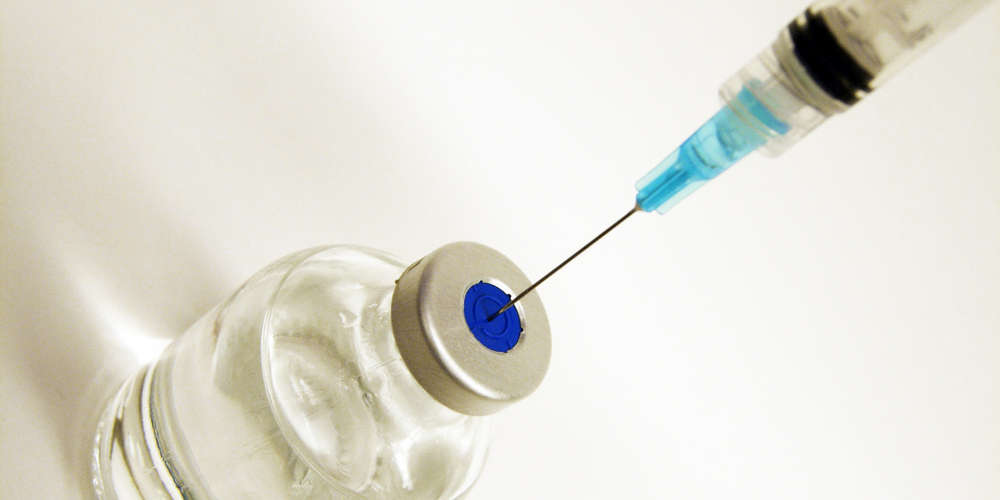
Injections for Peyronie's Disease Treatment
There is an indication however from reports that these two injection therapies are not as beneficial as some other non surgical treatments for Peyronie's disease.The FDA or the US Food and Drug Administration approved an injectable medication for Peyronie's disease in December 2013 which is called Xiaflex. This drug gained approval to treat Peyronie's illness. This medication is given in a treatment course that lasts for four cycles by your healthcare provider. It has shown some promise in treating penis curvature.
Another option that is sometimes used is hyaluronic acid. It was found that it helps to reduce inflammation in the penile area. Men that went to a study in 2016 as reported in the Journal of Sexual Medicine, said that those that received this acid injection once a week over a period of 10 weeks had plaque size that decreased in around half of the men that took part in the study.
The penile curvature was also reduced by around 10 degrees in many of the individuals. The men also indicated they had improved sexual satisfaction and a better erection.
Penile Traction Device
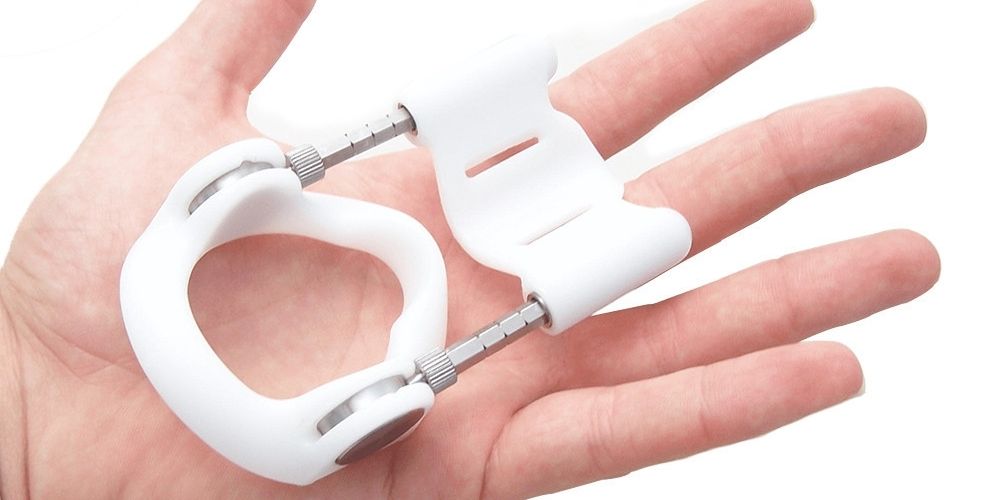
Device for Peyronie's Disease Treatment
This penile traction device for Peyronie's disease needs to be worn around 6 to 9 hours each day and they can help to straighten in the penis. The device will work very effectively if it is worn for an extended time period.
It can be somewhat cumbersome to wear but it is often considered to be the best option to treat Peyronie's disease.Penile traction device for Peyronie's disease is clinically proven to be beneficial for most individuals. Lots of clinical trials have been done to confirm the effectiveness of traction devices to treat penis curvature.
Challenges of Traditional Treatments
While traditional medical treatments for Peyronie's Disease exist, they are not without their challenges and drawbacks. It's essential to examine these limitations to provide a comprehensive understanding of the landscape of available options.Side Effects of Oral Medications
One of the primary conventional treatments involves the use of oral medications, such as collagenase or potassium para-aminobenzoate (Potaba). However, the effectiveness of these drugs varies among individuals, and they may come with side effects like gastrointestinal discomfort or allergic reactions. Additionally, not all men respond positively to oral medications, making it necessary to explore alternative approaches.Discomfort of Injections
Direct injections of medications into the plaque or penile tissue are another avenue for treatment. These injections may contain verapamil or interferon, but the process can be invasive and uncomfortable. Moreover, frequent injections may be required, posing challenges for individuals averse to needles or those seeking less intrusive solutions.Risks of Surgical Interventions
For cases of severe curvature or when other treatments prove ineffective, surgical options like penile plication or grafting may be considered. While these procedures can provide significant corrections, they also carry inherent risks such as infection, changes in sensation, or erectile dysfunction. The recovery period and potential impact on sexual function make surgery a less appealing choice for many men.Drawbacks and Side Effects
Beyond the specific challenges associated with each treatment modality, traditional approaches share common drawbacks. These may include the limited success rate, potential for relapse, and the financial burden associated with medical procedures. Moreover, the psychological stress of undergoing surgery or experiencing adverse reactions to medications can further exacerbate the emotional toll already imposed by Peyronie's Disease.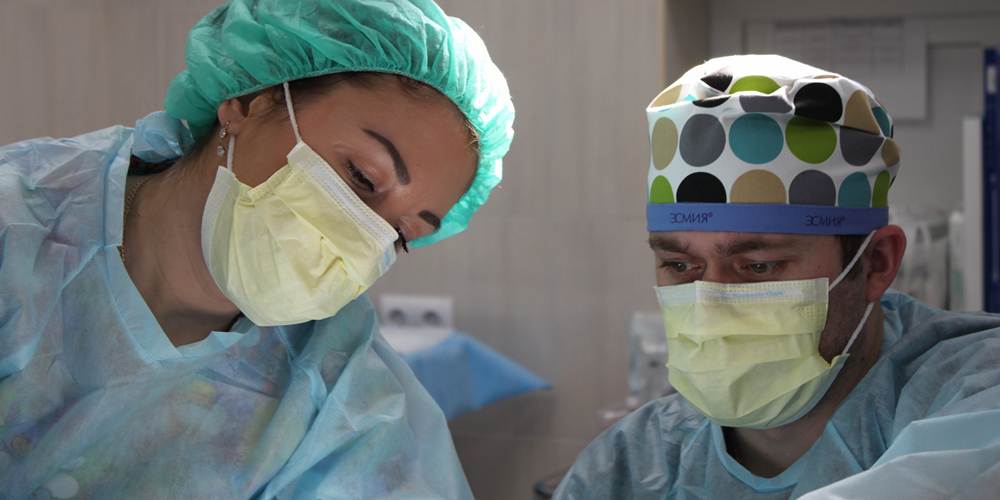
Challenges of Traditional Treatments
Benefits of Penile Traction Devices for Men over 40
In recent years, penile traction devices have emerged as a modern and non-invasive alternative for men seeking to address the challenges of Peyronie's Disease, particularly those in the age group of 40 and above. These devices offer a range of benefits that set them apart from traditional treatments, making them an attractive option for many individuals which can be easily noted in related penis traction device forums.- Non-Invasiveness and Comfort: Penile traction devices operate on a straightforward principle - they gently stretch the penis over time, encouraging the gradual reduction of curvature. Unlike surgical interventions or injections, these devices do not involve invasive procedures, reducing the risk of complications and discomfort. Men over 40 often appreciate the non-invasive nature of these devices, as it aligns with their preference for treatments that are gentle and easy to incorporate into their daily lives.
- Ease of Use: Penile traction devices are designed to be user-friendly, allowing individuals to use them in the privacy of their homes. With clear instructions and adjustable settings, these devices can be customized to accommodate different levels of curvature and personal comfort. This simplicity and adaptability make them particularly appealing for men over 40 who may prefer a discreet and convenient treatment option.
- Potential for Improved Sexual Function: Beyond addressing the physical aspects of Peyronie's Disease, penile traction devices may contribute to improved sexual function. By gradually correcting penile curvature, these devices have the potential to enhance erections and overall sexual satisfaction. This dual benefit of treating the condition while positively impacting sexual health adds to the appeal for men seeking comprehensive solutions.
- Applicability at Home: Penile traction devices provide the flexibility of in-home treatment, allowing individuals to incorporate the therapy into their daily routines. This feature is especially valuable for men over 40 who may have busy schedules or prefer the convenience of managing their treatment independently.
- Psychological Well-Being: The discreet and non-intrusive nature of penile traction devices can contribute to improved psychological well-being. Men may experience reduced anxiety and stress associated with the condition, fostering a positive mindset and confidence in their ability to address Peyronie's Disease effectively.
Summary: find the best treatment for Peyronie's disease after 40
These are some of the most known and reliable Peyronie's disease treatment options. What is the best treatment for Peyronie's disease? This is a complicated issue that needs to be addressed by a healthcare provider. In addition to the surgery, there are also options for non surgical treatment for Peyronie's disease and some may work better than others for your individual issue.Comprehensive Approach to Treatment
Penile traction devices offer a comprehensive approach to Peyronie's Disease by gently correcting penile curvature over time. Unlike traditional methods with their inherent challenges, these devices prioritize non-invasiveness, comfort, and ease of use, aligning with the preferences of many men over 40 seeking effective solutions.Restoration of Confidence and Well-Being
Beyond the physical benefits, penile traction devices contribute to the restoration of confidence and overall well-being. The discreet nature of at-home treatment addresses the psychological toll of Peyronie's Disease, promoting a positive mindset and empowering individuals to actively participate in their healing process.A Personalized Path to Recovery
Recognizing that each individual's journey with Peyronie's Disease is unique, penile traction devices offer a customizable and adaptable treatment option. With adjustable settings and user-friendly design, these devices cater to diverse needs, allowing users to tailor their treatment plans according to their comfort levels and preferences.The Next Step: Taking Control of Your Health
If you are a man over 40 grappling with Peyronie's Disease, it's time to take control of your health. Consult with healthcare professionals to discuss your symptoms and explore the most suitable treatment options, with a special emphasis on the potential benefits of incorporating penile traction devices into your plan.It should be noted that penile traction device received numerous approvals in the latest clinical studies and is now recommended as the best treatment option for Peyronie's disease by most healthcare experts.Get the best penile traction device
References:
comments powered by Disqus


 Article by Adult Health Care Center
Article by Adult Health Care Center